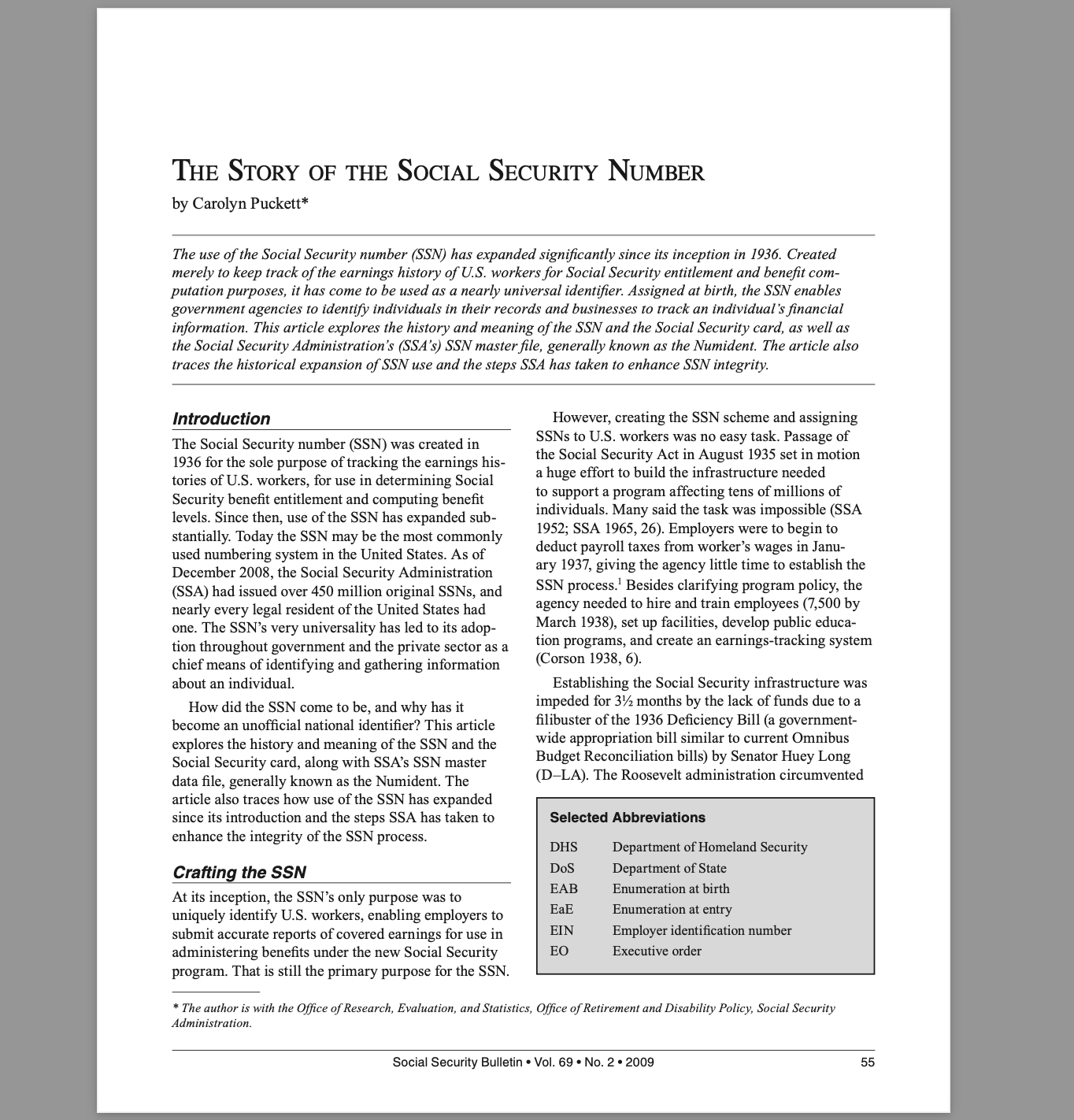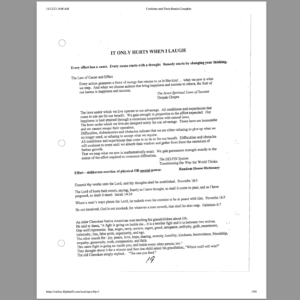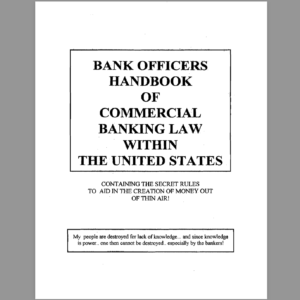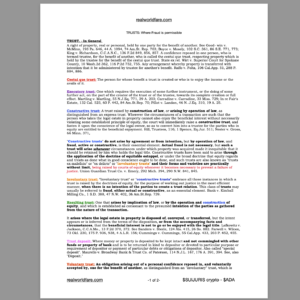Description
pages total: 20
The use of the Social Security number (SSN) has expanded significantly since its inception in 1936. Created merely to keep track of the earnings history of U.S. workers for Social Security entitlement and benefit computation purposes, it has come to be used as a nearly universal identifier. Assigned at birth, the SSN enables government agencies to identify individuals in their records and businesses to track an individual’s financial information. This article explores the history and meaning of the SSN and the Social Security card, as well as the Social Security Administration’s (SSA’s) SSN master file, generally known as the Numident. The article also traces the historical expansion of SSN use and the steps SSA has taken to enhance SSN integrity.
Introduction
The Social Security number (SSN) was created in 1936 for the sole purpose of tracking the earnings his- tories of U.S. workers, for use in determining Social Security benefit entitlement and computing benefit levels. Since then, use of the SSN has expanded substantially. Today the SSN may be the most commonly used numbering system in the United States. As of December 2008, the Social Security Administration (SSA) had issued over 450 million original SSNs, and nearly every legal resident of the United States had one. The SSN’s very universality has led to its adoption throughout government and the private sector as a chief means of identifying and gathering information about an individual.
How did the SSN come to be, and why has it become an unofficial national identifier? This article explores the history and meaning of the SSN and the Social Security card, along with SSA’s SSN master data file, generally known as the Numident. The article also traces how use of the SSN has expanded since its introduction and the steps SSA has taken to enhance the integrity of the SSN process.
However, creating the SSN scheme and assigning SSNs to U.S. workers was no easy task. Passage of the Social Security Act in August 1935 set in motion a huge effort to build the infrastructure needed
to support a program affecting tens of millions of individuals. Many said the task was impossible (SSA 1952; SSA 1965, 26). Employers were to begin to deduct payroll taxes from worker’s wages in Janu-
ary 1937, giving the agency little time to establish the SSN process.1 Besides clarifying program policy, the agency needed to hire and train employees (7,500 by March 1938), set up facilities, develop public educa- tion programs, and create an earnings-tracking system (Corson 1938, 6).
Establishing the Social Security infrastructure was impeded for 31⁄2 months by the lack of funds due to a filibuster of the 1936 Deficiency Bill (a government- wide appropriation bill similar to current Omnibus Budget Reconciliation bills) by Senator Huey Long (D–LA). The Roosevelt administration circumvented
Crafting the SSN
At its inception, the SSN’s only purpose was to uniquely identify U.S. workers, enabling employers to submit accurate reports of covered earnings for use in administering benefits under the new Social Security program. That is still the primary purpose for the SSN.








Reviews
There are no reviews yet.